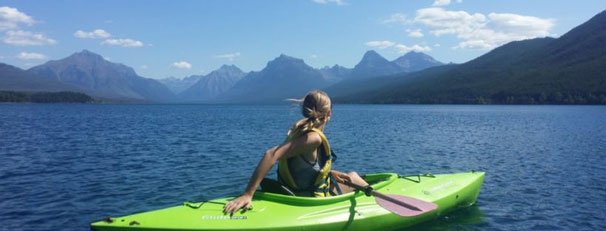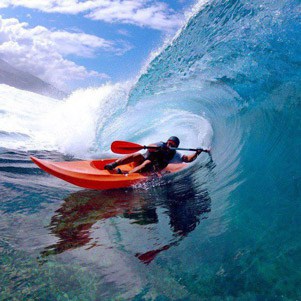When you first begin kayaking, you may be meandering around a lake to get used to paddling.
Once you start to gain some experience, you will then be thinking of making a kayaking trip that takes you further into the great outdoors.
Once you have packed all your gear and head off to your launch point, it is often a mistake to see the extent of the kayak trip, and then you try to calculate it into time.

How long will it take you? Do you have enough time in the day? Many questions do need answers, and most of them relate to your safety more than anything does.
In this guide, you can find out all you need to know about how fast kayaks can go, and how long individual trips will take depending on the area, water conditions, and the type of kayak you have.
How Fast Does a Kayak Go?
It is possible to use a formula to calculate how fast kayaks can go; however, this doesn’t mean you can paddle one that fast.
Once you see all the contributing factors, you tend to find an average kayak speed is better to use. A beginner using a recreational kayak made from polyethylene in calm weather conditions can paddle around at a rate of 3 miles per hour.
However, it will be hard to maintain this speed for extended periods. If you calculate breaks, enjoying watching wildlife and resting after a bout of paddling your kayak at speed. You find the average kayaking speed falls to around 2 miles per hour.
Experienced kayakers who use touring kayaks, which offer faster maximum speed, can hope to achieve between 4 and 5 miles per hour. Thus, they are likely to take around 15 minutes to kayak a mile. (Find the Best Roof Rack for Kayak)
If you wish to use a formula, you can find out how fast any given kayak ought to be (before planning).
Maximum Kayak speed = 34 x the square root of a kayak’s hull length once it sits in the water.
Once you calculate this, it gives you a maximum hull speed. In practice, this means you can achieve the maximum kayaking speed quicker in a shorter kayak, and before you exert maximum effort.

Types of Kayak
After the above calculation, you can see the impact that the various types of kayak will have.
In comparison, you will find a high-end touring kayak and a recreational kayak will glide in the water differently from each other. It may be a slight difference, but you can feel it.
You see a more pronounced difference for a more expensive top kayak, but it doesn’t mean that you have to go from A to B as fast as possible, so there is no reason to spend just for speed.
Similarly, a sit on top kayak is different from a sit-in kayak, which tend to be faster by default than a sit on top model.
The reason is that the center of gravity is lower, and therefore you can paddle faster. In addition to this, if there is wind resistance, where a sit-on kayak has more.
You can find other kayak designs that will affect kayaking speed. A fishing kayak isn’t designed for speed and comes with a wider flat bottom. In comparison, these will be far slower and are seldom used for paddling long distances.
Others are if you go paddle boarding, some of these models can reach quite high top speeds, yet it won’t be possible to keep this up for an extended distance.
Finally, you have a sea kayak. Conditions are very different on the ocean, and your top kayak speed can be way off what is possible on an inland lake or river.
Paddle Types and Experience
Your choice of kayak paddle is often an oversight when it comes to determining how long it takes to paddle a mile.
Paddles are tailored for your height, boat width, and your type of kayak. Weight of paddles allow you to paddle longer, and the shape of the blades can have a slight effect on how much force you can drive into the water.
If you are new to kayaking, you may find you can’t paddle a mile in one go without taking a break. Before attempting this, it is good to know how long is a mile because visualizing it doesn’t help unless you can see the end.
Experience also determines how long it takes to kayak up to speed, and stamina will determine how many hours it hours to complete your journey you will need.
How Long Does it Take to Kayak a Mile
Once you add up the weight of your kayak, your gear and yourself, and all then other factors above. You can begin calculating the time need for any multiple mile trip in your kayak.
There is little use choosing a twenty-five-mile kayak trip and find you can’t complete it inside the time you have available.
Using the above information, you would take around 30-minutes to paddle one mile. With no stopping to absorb the glories of nature in the great outdoors, or to stop for lunch, you can be on the water for around 12-hours.
You can find many other determining factors that can slow you down on each mile, so it is better to overestimate the time it takes you to kayak for one mile in distance.
Once you begin kayaking, you will be there to enjoy surroundings that are not possible to reach on foot.
Now you understand how long each trip should take; you can select the trips that you can fit into the time comfortably without tiring you out.





